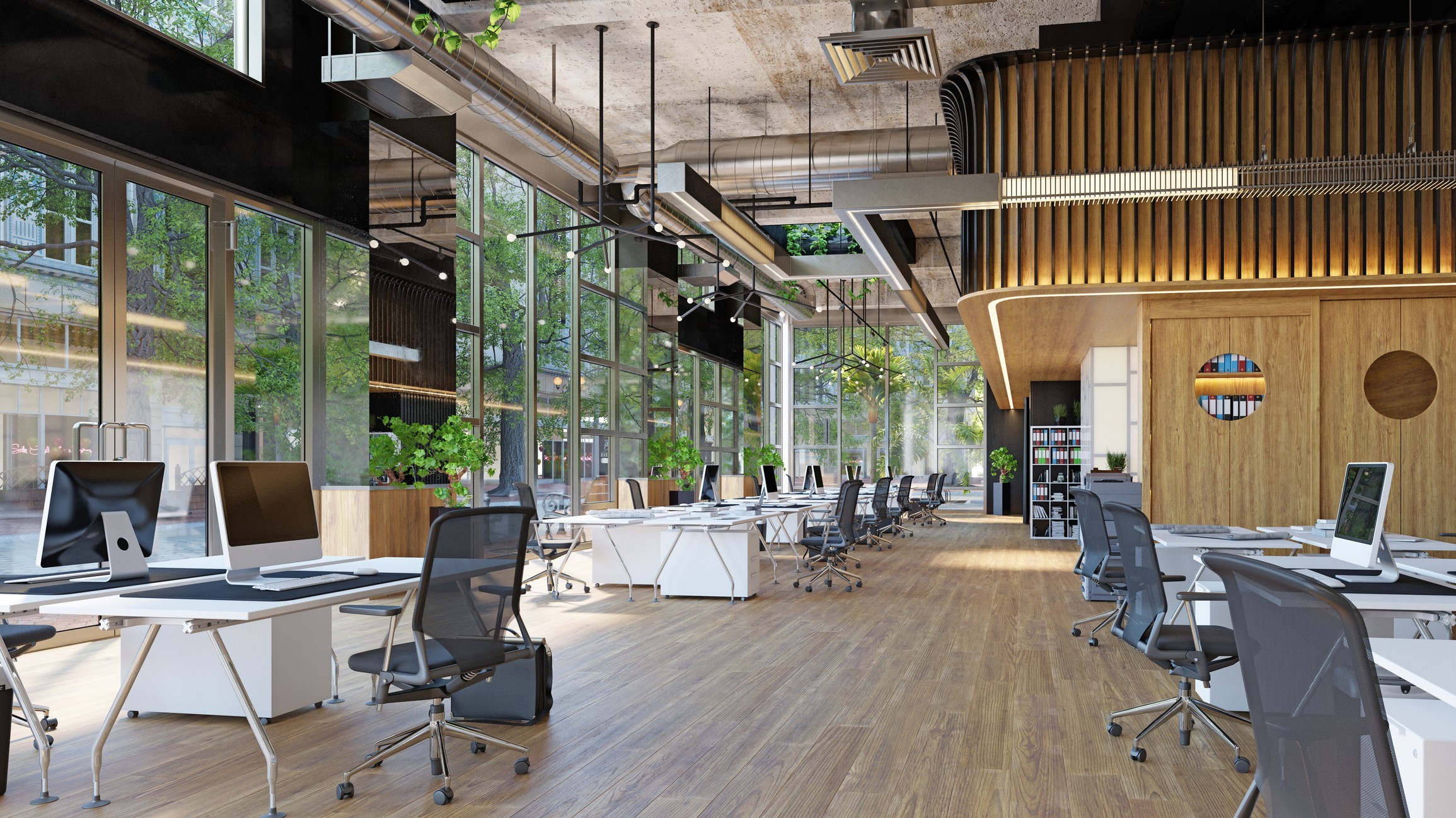Commercial real estate has undergone major changes, including the rise of coworking spaces. As remote and hybrid work environments become the norm, more businesses are temporarily sharing commercial offices rather than leasing them long-term.
Learn more about how coworking spaces are transforming the commercial real estate market. What are the reasons behind this shift? Are these unique work environments here to stay? These pressing questions need answers.
Download Printable Article (PDF) >>>

The Rise of Coworking Spaces Explained
The market for office buildings has been underperforming the last few years due to stagnation from COVID-19. While analysts projected more activity in 2023, it has not come to pass. In fact, as apartments, industrial buildings and retail spaces increased their positive absorptions, office markets saw a reduction of 29 million square feet from 2022 to 2023.
The main cause behind this downturn is undoubtedly the rise of remote and hybrid work. Although the work-from-home trend can give people a better work-life balance and more employment opportunities, it has caused a record number of vacancies in commercial buildings.
Nationwide vacancies peaked at 16.1% in the first quarter of 2023 and are expected to rise. Commercial property investors have also become more selective because of high prices and construction
supply disruptions, making renovations almost impossible. In turn, they have raised their rental rates to compensate for these factors and shifted their focus to multi-family properties or buildings in industrial sectors such as warehouses.
Meanwhile, growing businesses are choosing their office leases more carefully because the rental rate is no longer the top priority. They also need to consider the local labor force. Business owners know they’re unlikely to retain full employment numbers in areas where remote workers are the majority, so there’s no reason to rent a full office space.
Coworking Spaces Offer Solutions
As a result of these changes, more and more forward-thinking commercial property investors are turning their empty offices into versatile work areas — also known as coworking spaces. These spaces can accommodate multiple businesses with hybrid workforces at the same time, which financially benefits both parties.
Coworking spaces will continue to grow as Millennials and Gen Z become the majority of the global workforce. Tech-savvy younger generations aren’t looking for traditional offices anymore, so
property owners must adapt. Here are some new real estate trends that will grow as a result of coworking space development.

Greater Emphasis on Facilities Management
Coworking requires businesses to share offices, which means there must be a facilitator who can settle any disputes. Coworking spaces aren’t like other communal areas where businesses only share the rooms themselves. In this instance, businesses share the expenses for everything — such as internet connection, electricity, water, security and other essentials.
Landlords have a greater responsibility than usual to keep the peace between tenants of coworking spaces. They have to deal with conflicting interests about office customizations and workplace
boundaries. Although this arrangement sounds challenging, it can lead to great profits through effective facilities management.
Local businesses that are searching for coworking spaces will no longer look for the cheapest option. Splitting rent with other companies makes even the most expensive offices more affordable. Instead, they will search for empty spaces with the most competent facility managers (FMs) and the lowest potential for future disputes.
Moreover, offices will undergo constant redevelopment to keep up with the growing number of freelancers and startups looking to rent. Smart technology and sustainable infrastructure will become must-haves rather than nice-to-haves in the near future.
Shorter Leases
Traditionally, companies used to lease offices for about five to ten years. With coworking spaces, that timeframe will drop to just one year or even a month-to-month basis. This arrangement is better for both parties because the business can quickly relocate if necessary and the property owner has a constant influx of new tenants.
Coworking spaces will also result in more subleases, with a third party occupying part of the empty space and setting firm boundaries with other tenants. Subleasing is slightly different from cohabitation, in which businesses share the same office with fewer boundaries. Both options are more cost-effective than traditional leasing right now, and they offer some impressive benefits.
The greatest benefit of getting a short-term lease on a coworking space is the financial flexibility. In fact, flexible office leases proved more affordable than long-term leases in 96% of American
cities — including 17 cities where coworking costs were just half the price. This trend remained consistent on both coasts, the deep south and the midwest.
Since businesses don’t have to make an extended commitment or negotiate alone, they also have more bargaining power for perks such as free rent periods, tenant improvement allowances and
new furnishings. Property owners will have to work harder to keep their tenants around and keep their coworking spaces profitable.
The Changing Role of Commercial Real Estate Brokers
Real estate brokers have always played an indispensable role in helping property investors and business owners find the ideal locations, prices and amenities. However, this role will change as people adjust their investment strategies toward short-term coworking spaces instead of long-term single tenant offices.
Unfortunately, the role of real estate brokers may become less important as the hybrid work culture gains traction. Businesses might not feel it necessary to hire a broker to negotiate a lease every few months. They will either hold onto the same broker or stop using a broker altogether. It’s far too premature to say that real estate brokers will become obsolete, but they will certainly have
to work harder to retain clients. New clients will be harder to come by as coworking spaces make businesses more financially independent. Plenty of people want to buy, sell and rent property, but
competition will get more intense as the commercial real estate market continues its recovery.
Coworking Spaces Are Here to Stay
Several factors strongly suggest that coworking spaces are here to stay. High rent prices are forcing tenants to pursue shorter leases, commercial property owners can’t afford vacancies for much longer and the younger generations of employees have bought into the hybrid work model. Real estate brokers will have to adapt to this major shift or risk getting left behind.
Rose Morrison is a residential and commercial real estate writer and the managing editor of Renovated. To see more of her work visit: https://renovated.com/



